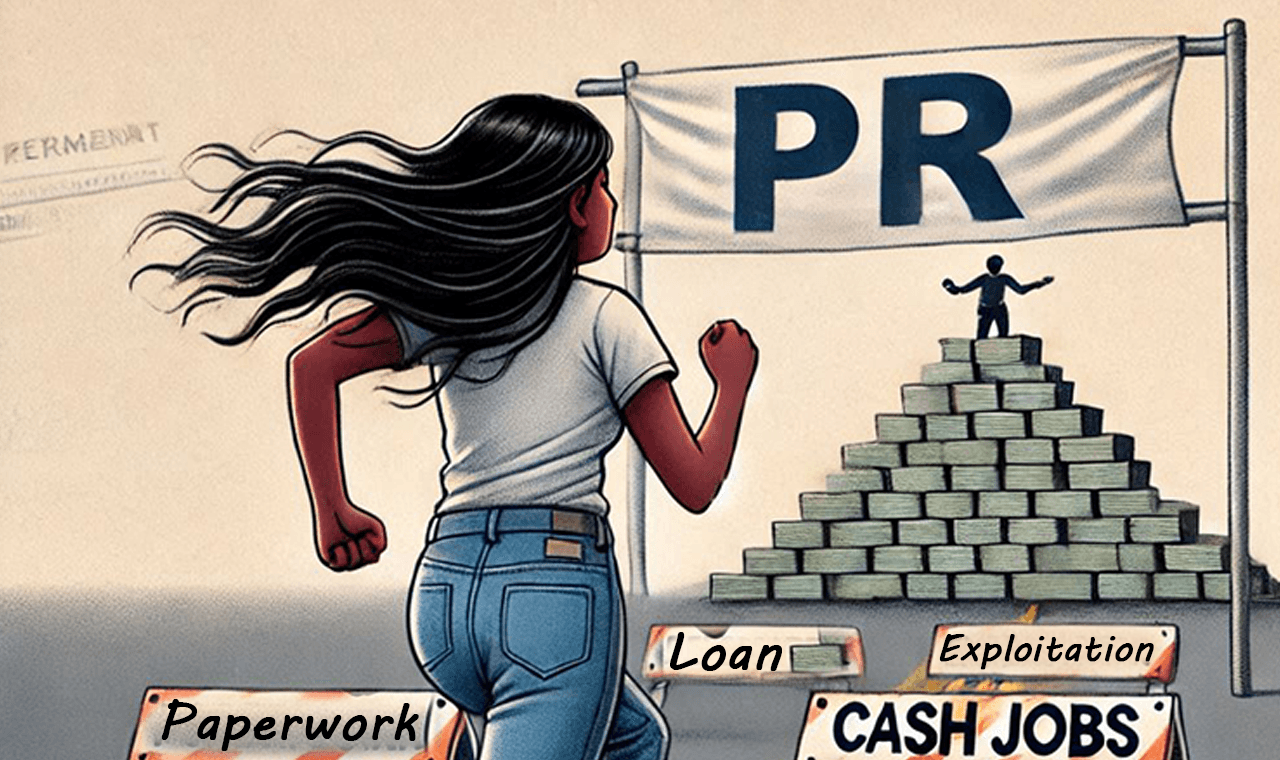Canada is at a crossroads. In 2025, the country faces an immigration reset that will leave a huge number of temporary residents in legal limbo. With permits expiring and tighter rules making it harder to renew, many who once dreamed of a better life in Canada may soon find themselves classified as illegal.
The federal government has announced ambitious plans to reduce the number of temporary residents, aiming to manage population growth, housing shortages, and strain on public services. But behind these policies lies a human story, one that reveals the emotional, financial, and legal challenges of navigating Canada’s shifting immigration landscape.
The Numbers Don’t Lie
More than two million temporary residents are expected to see their permits expire over the next two years. This includes international students, temporary foreign workers, and those on post-graduation work permits. While some will leave voluntarily, experts believe a large number will stay, choosing to overstay their permits or convert to visitor visas to buy time.
For many, returning home is not an option. There are thousands of people who have taken on multiple loans and made countless sacrifices to build a life in Canada. With work permits nearing expiration, they are left weighing difficult options, such as applying for visitor visas to extend stay or facing the risk of deportation. These people have heavily invested in their future, and for many, leaving is not a viable option, even if it means resorting to working under the table to survive, and, there are thousands in count, who want cheap labour, so, there is a greater risk of exploitation of people with illegal status.
A Broken System?
Immigration lawyers and advocates warn that Canada’s system is not equipped to handle the looming crisis. Windsor-based lawyer Eddie Kadri says the country’s laws create incentives for illegal immigration. For example, anyone who can remain undetected for 14 days can file an asylum claim, a loophole he believes fuels human smuggling and irregular border crossings.
“What we need is a system that protects our borders and serves our national interests, while also giving people fair and realistic pathways to stay,” Kadri says. He predicts a surge in asylum claims as the U.S. toughens its own immigration policies, leaving Canada to deal with the fallout.
Human Smuggling and Organized Crime
The RCMP has flagged human smuggling as a growing issue at the Canada-U.S. border, particularly in southwestern Ontario. Organized crime is turning illegal migration into a profitable business, exploiting those desperate to stay in the country. Constable Ian Smith from the Windsor RCMP detachment says smuggling networks are a significant challenge, complicating efforts to secure the border.
Adding to the pressure, U.S. President Donald Trump’s promise of mass deportations is expected to push more migrants north. Trump’s appointees have called the Canada-U.S. border an "extreme vulnerability," adding fuel to an already complex situation.
Living in the Shadows
For those without legal status, life becomes a constant struggle. Without work permits, many resort to cash jobs, live in cramped apartments, and drastically cut back on basic expenses just to get by. A significant number of young professionals from India, now on visitor visas after their work permits expired, are doing everything possible to improve their immigration points, but their chances remain slim. The shift in immigration status doesn’t halt expenses, forcing people to work under challenging conditions. Many face compromises, including exploitation, low wages, and substandard housing. Having spent four to five years in Canada and invested heavily in building a future, the thought of returning home feels almost impossible for many.
The Bigger Picture
Canada’s population surged after the pandemic due to record immigration levels, but the federal government is now pulling back. Temporary resident caps are being tightened, and the path to permanent residency has become increasingly competitive. Cutoff scores in the Express Entry system are rising, leaving many skilled workers out of the running.
At the same time, public opinion on immigration is shifting. Deputy Prime Minister Chrystia Freeland insists Canada will maintain secure borders while welcoming newcomers in an “organized, systematic way.” But critics say the current system is anything but organized.
What’s Next?
The future of immigration in Canada depends on finding a balance between humanitarian commitments and national interests. For now, the reality is that many temporary residents will face tough decisions in 2025, return home, stay and risk becoming illegal, or fight for a system that doesn’t seem to be listening.
As Canada grapples with these challenges, one thing is clear. The faces behind the numbers are real people, with real hopes and dreams, now left hanging in the balance.

